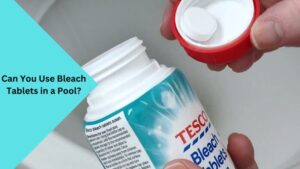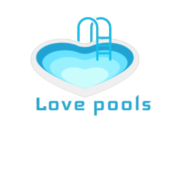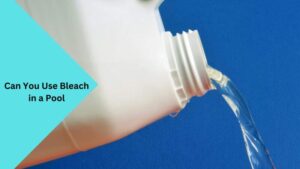Imagine enjoying a warm summer day, lounging by your sparkling pool, only to notice a greenish tint to the water and slimy walls covered in algae. Ensuring that your pool remains clean and pristine is essential, not just for aesthetics, but for the health and safety of those who swim in it. One common question that arises when it comes to pool maintenance is, “Can you use bleach in a pool?” In this comprehensive guide, we will dive into the world of pool maintenance and explore the potential uses and benefits of using bleach as part of your pool cleaning routine.
Understanding the Role of Bleach in Pool Maintenance
Before we address whether bleach can be used in a pool, let’s first understand the role that bleach plays in the overall maintenance of a pool. Bleach, which contains sodium hypochlorite as its active ingredient, is a powerful disinfectant commonly used to sanitize and clean various surfaces. It effectively kills bacteria, viruses, and other harmful organisms, making it a popular choice for cleaning and disinfection in many settings.
Will Bleach Kill Pool Algae?
One common concern among pool owners is the growth of algae in their pool. Algae are microscopic organisms that thrive in warm and humid environments, making swimming pools an ideal breeding ground if proper precautions are not taken. So, the question lingers, “Will bleach kill pool algae?”
The answer is yes, bleach can effectively kill pool algae. Its active ingredient, sodium hypochlorite, destroys both green and black algae by disrupting their cellular structures and inhibiting their growth. However, it’s important to note that using bleach alone may not completely eradicate algae problems. Regular monitoring and maintenance of your pool’s chlorine levels, pH balance, and other factors are necessary to prevent algae growth and maintain a pristine swimming experience.
Related post for you: Is Swimming Pool Algae Dangerous?
Using Bleach to Clean and Maintain Your Pool
Now that we know bleach can be used to tackle algae in a pool, let’s explore how you can effectively use bleach for pool cleaning and maintenance. Here are some step-by-step guidelines to help you incorporate bleach into your pool cleaning routine:
- Ensure Proper Mixing: When using bleach in your pool, it’s crucial to follow the correct mixing ratios. The general rule of thumb is to add approximately one gallon of bleach per 10,000 gallons of water to raise the chlorine levels. However, it’s recommended to check the product label and consult pool maintenance experts for specific dosage instructions.
- Prevent Bleach Stains: Bleach, when poured directly into the pool, can create unsightly stains on vinyl liners or concrete surfaces. To avoid this, dilute the bleach in a bucket of water before adding it to the pool. This will help distribute the bleach evenly and minimize any potential staining.
- Apply During Non-Swimming Hours: To ensure maximum effectiveness, it’s best to add bleach to your pool during non-swimming hours, preferably in the evening, as sunlight can degrade the chlorine content in bleach more quickly.
- Monitor Chlorine Levels: After adding bleach to your pool, regularly monitor the chlorine levels using a pool water testing kit. Aim for a chlorine level of 1–3 parts per million (ppm) to maintain proper sanitation and prevent algae growth.
- Maintain pH Balance: Remember to check and maintain the pH balance of your pool water. The ideal pH range for a pool is 7.2-7.6. Bleach can slightly increase the pH level, so you may need to adjust it using appropriate pH balancers.
By following these guidelines and incorporating bleach into your pool cleaning routine, you can effectively eliminate pool algae, keep the water clear and safe for swimming, and maintain a healthy pool environment.
Can You Use Bleach Tablets in a Pool?

In addition to liquid bleach, you may come across bleach tablets specifically marketed for pool use. These tablets, commonly referred to as “pool shock” or “chlorine tablets,” are designed to slowly dissolve and release chlorine into the water, effectively sanitizing the pool over time. Here is complete guide about Is There a Difference Between Chlorine Tablets? Exploring the Key Factors
While bleach tablets contain chlorine, it’s important to note that they may not be as effective as liquid bleach in killing and preventing algae growth. Bleach tablets are primarily intended for maintaining chlorine levels in a pool, rather than targeting and eliminating stubborn algae. However, they can be a convenient option for maintaining consistent chlorine levels in between regular pool maintenance.
If you do choose to use bleach tablets in your pool, follow the manufacturer’s instructions for proper usage and dosage. It’s also crucial to regularly monitor chlorine levels and overall pool condition to ensure proper sanitation and water quality.
Alternatives to Bleach for Pool Shock Treatment
While bleach can be a viable option for certain pool maintenance tasks, such as algae control, some pool owners may prefer to explore alternative shock treatments. Here are a few alternatives to using bleach for pool shock treatment:
- Pool Shock Products: Pool shock products are specifically formulated to rapidly increase chlorine levels in your pool while effectively killing algae and bacteria. These products often come in powdered or granular forms and should be used according to the manufacturer’s instructions.
- Non-Chlorine Shock: Non-chlorine shock treatments, such as potassium peroxy monosulfate (MPS), offer an alternative for pool owners looking to avoid chlorine-based products. MPS shock treatments effectively oxidize organic contaminants and help maintain water clarity without the strong odor and potential side effects of chlorine.
- Salt Chlorinator Systems: Salt chlorinators utilize salt and an electrolytic cell to produce chlorine within your pool. This eliminates the need for adding chlorine manually and provides a continuous supply of chlorine for sanitization. Salt chlorinators can be a more automated and user-friendly option for pool owners seeking long-term convenience.
When considering alternative shock treatment options, it’s essential to weigh their pros and cons, consult professionals, and follow the manufacturer’s instructions for proper usage. Additionally, always prioritize the safety and health of swimmers while maintaining your pool.
Conclusion
In conclusion, bleach can indeed be used as a valuable tool in your pool maintenance arsenal. Its powerful disinfectant properties make it effective in killing pool algae and maintaining proper water sanitation. By incorporating bleach into your pool cleaning routine and following the recommended guidelines for usage, you can keep your pool sparkling clean and safe for swimming enjoyment.
Remember, proper pool maintenance involves not only the use of chlorine-based products like bleach but also maintaining proper water balance, regular cleaning, and effective filtration. Regularly monitoring your pool’s pH levels, chlorine levels, and overall water quality will contribute to a well-maintained pool that provides optimal swimming experiences for you, your family, and friends.
So, the next time someone asks, “Can you use bleach in a pool?”, you can confidently answer in the affirmative, armed with the knowledge of how bleach can be a valuable ally in your pool maintenance efforts. Dive into the world of pool maintenance, embrace the power of bleach, and enjoy a clean and inviting swimming pool all season long.

Greetings, fellow pool enthusiasts! I’m Turner Davis, your dedicated guide to the world of pool care and maintenance. With over a decade of experience in the field, I’ve made it my mission to transform ordinary pools into extraordinary aquatic retreats.

